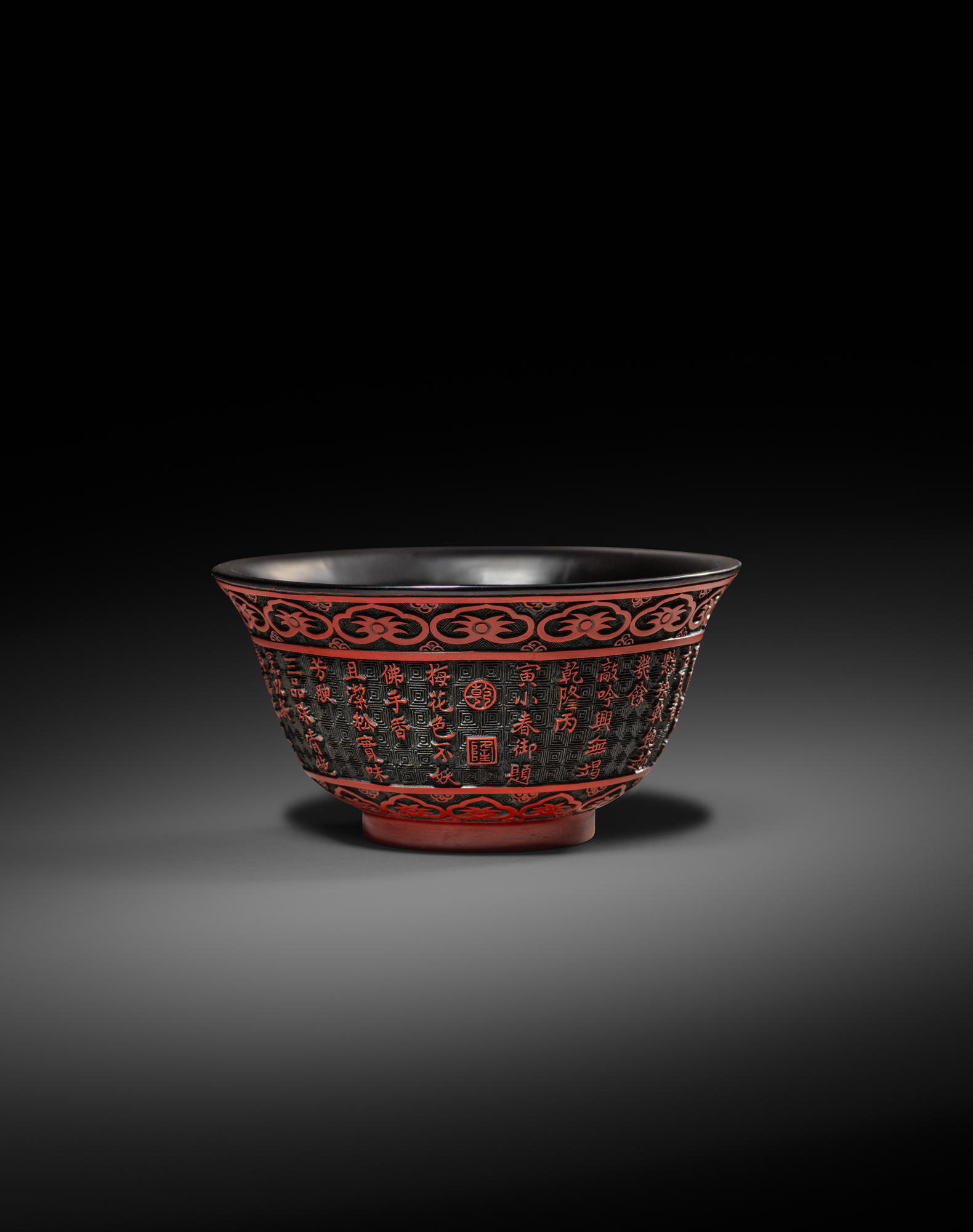Fine Chinese Paintings & Works of Art - 12th November 2019
Lot 34
A RARE CHINESE IMPERIAL INSCRIBED TWO-COLOUR LACQUER TEA BOWL SIX CHARACTER QIANLONG MARK AND OF...
Estimate £50,000 - £70,000 | Hammer £50000
+ Buyers Premium
Description

A RARE CHINESE IMPERIAL INSCRIBED TWO-COLOUR LACQUER TEA BOWL
SIX CHARACTER QIANLONG MARK AND OF THE PERIOD 1736-95
The deep bowl flaring at the rim, carved to the exterior in cinnabar lacquer with the poem Sanqing Cha ('Three Purity Tea') composed by the Qianlong Emperor, the verse dated to the bingyin year corresponding to 1746 and followed by the seal marks Qian and Long, with bands of ruyi-heads encircling the rim and foot, all reserved on a black lacquer leiwen ground, the interior in black lacquer, 11.1cm.
The Qianlong Emperor is believed to have written the poem Sanqing Cha in the bingyin year on his birthday whilst drinking tea on a cold day. During a visit to the sacred mountain Wutai Shan, the Qianlong Emperor drank tea brewed in snow water, which is believed to give the tea a unique flavour and purity. The poem describes this tea, which was made with prunus blossoms, finger citron and pine nut kernels. A translation of this poem by C F Shangraw is published in Chinese Lacquers in the Asian Art Museum of San Francisco, Orientations, April 1986, p.41.
Provenance: purchased from Gerard Levy, Paris, c.2007, and by repute formerly the collection of Ernest Grandidier (1833-1912).
Cf. The Victoria and Albert Museum, London, museum no.FE.63-1974 for another bowl of this type; see also Zhongguo qiqi quanji ('Complete series on Chinese lacquer'), vol.6, pl.211 for a pair of related bowls in the Tianjin Municipal Art Museum.
See also Christie's Hong Kong, 2nd December 2015, lot 3163, Sotheby's Hong Kong, 9th October 2007, lot 1644, Sotheby's Hong Kong, 3rd April 2018, lot 3441, and Bonhams San Francisco, 21st June 2011, lot 8237 for further examples.
This design is also found on blue and white and iron-red porcelain. See S Marchant & Son, Exhibition of Qing Mark and Period Blue and White, 1984, no.26 for a bowl inscribed with Sanqing Cha in underglaze blue.